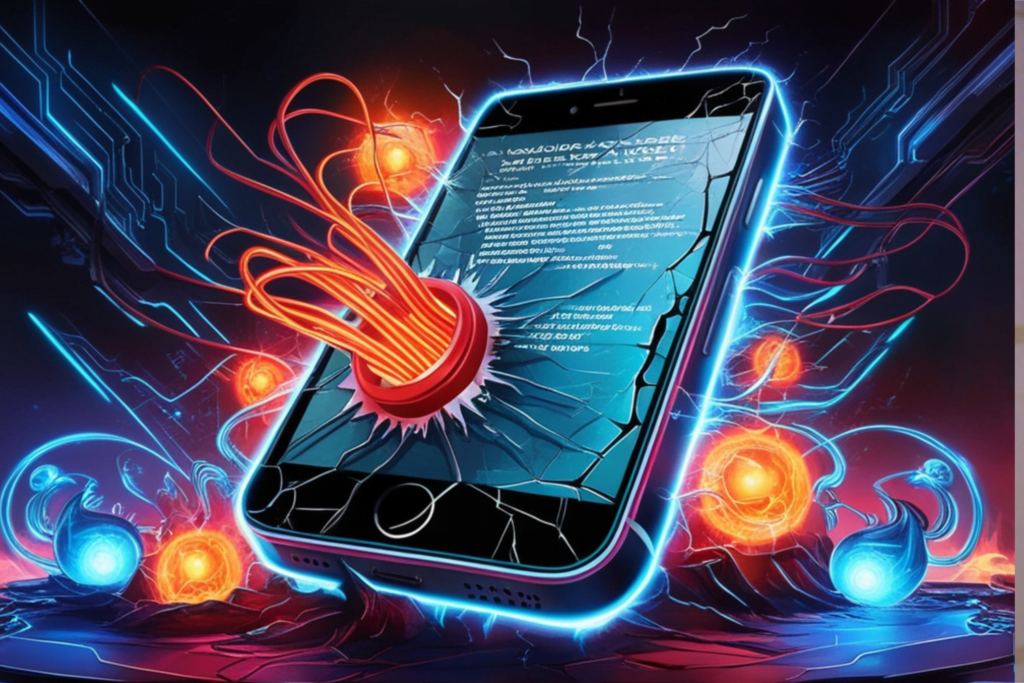Hey there, fellow tech lovers! Pull up a chair, grab your favorite Apple device, and let’s chat about something that’s got the entire tech world buzzing. And no, it’s not the latest iPhone rumors or Tim Cook’s newest turtleneck – it’s way more serious than that.
The Bombshell
So, picture this: I’m scrolling through my tech news feed, sipping my morning coffee (okay, it was afternoon coffee, don’t judge), when BAM! I nearly spit out my latte. Symantec, you know, the big-shot cybersecurity firm from California, just dropped a bombshell that’s making waves across the entire digital landscape.
Ready for it? Deep breath…
Over 1.4 billion Apple devices are at risk from a massive cyberattack. Yeah, you read that right. BILLION. With a B. That’s more devices than there are people in China!

The Scale of This Mess
Let’s break down this mind-boggling number for a sec:
- It’s about 4 times the population of the USA. Imagine every American carrying four Apple devices – that’s the scale we’re talking about.
- It’s roughly one-fifth of the world’s population. One in every five people on Earth could be affected. Crazy, right?
- If each device was a dollar, we’d have enough to buy, well, Apple. The company. (Okay, not really, but you get the point!)
We’re talking iPhones, iPads, Macs – basically anything that’s ever been graced by that iconic little fruit logo. It’s like someone decided to go bobbing for Apples and came up with the entire orchard!
So, What’s the Deal?
Now, I know what you’re thinking. “Another day, another hack. What’s the big deal?” But trust me, this isn’t your run-of-the-mill phishing scam or that Nigerian prince asking for your bank details (I’m still waiting for my millions, by the way).
This attack is sophisticated. Like, Ocean’s Eleven meets The Matrix sophisticated. It’s a two-step digital dance that’s catching even the savviest of tech users off guard.
Step 1: The Text That Isn’t What It Seems
It all starts innocently enough – with a text message. But this isn’t your average “Hey, u up?” text from that person you gave your number to at the bar last week. Nope, this message looks like it’s straight from Apple HQ.
The cybersecurity folks call it “smishing.” (I know, sounds like something you’d order at a hipster smoothie bar, right?) It’s basically phishing, but via SMS. And let me tell you, these messages are crafted better than my mom’s apple pie.
They hit you with lines like:
- “Your Apple ID has been locked for security reasons. Act now!”
- “Unusual activity detected on your account. Verify your identity immediately.”
- “Your iCloud storage is full. Click here to upgrade and avoid data loss.”
It’s like they know exactly which buttons to push to make you panic and click without thinking.
Step 2: Welcome to Fake Apple Land
So, you’ve clicked the link (no judgment, we’ve all been there). What happens next is where things get really sneaky.
You’re taken to a website that looks EXACTLY like the official Apple login page. We’re talking pixel-perfect recreation. The logo, the colors, even that clean, minimalist Apple vibe – it’s all there.
These fake sites are so good, they’d probably fool Tim Cook himself. They’ve even got that little padlock icon in the address bar that we’ve all been taught means “safe and secure.” Spoiler alert: it doesn’t always mean that anymore.
It’s like walking into what you think is an Apple Store, only to find out it’s actually a front for a gang of tech-savvy pickpockets.

Why This is Freaking Everyone Out
Okay, so we’ve got a massive number of potential victims and a super sneaky attack method. But there’s more keeping the cybersecurity experts up at night:
- It’s Huge: 1.4 billion devices is not just a big number, it’s an “oh my god, hold me” number. It’s like trying to protect every grain of sand on a beach.
- It’s Smart: These attackers clearly know their way around Apple’s ecosystem. They’re exploiting vulnerabilities that even the folks at Cupertino didn’t see coming.
- It’s Stealthy: The fake messages and websites are so convincing, even your tech-savvy friend who always fixes your Wi-Fi could fall for it.
- It’s a Gateway: Once they’ve got your Apple ID, it’s like they’ve got the master key to your digital life. Emails, photos, credit card info – it’s all up for grabs.
The Ripple Effect
But wait, there’s more! (Sorry, couldn’t resist the infomercial vibes.)
This isn’t just about individual users losing their selfies or Candy Crush high scores. The implications are way bigger:
- Think about all the companies that have employees with work emails on their iPhones. One compromised device could be a backdoor into an entire corporate network. Yikes!
- Government officials use Apple devices too. I’m not saying it’s a national security threat, but… okay, yeah, it kind of is.
- With smart homes on the rise, a hacked Apple device could literally open doors for criminals. “Hey Siri, let the burglars in,” said no one ever, but it could happen!
It’s like a digital version of that “Six Degrees of Kevin Bacon” game, except instead of connecting to Kevin Bacon, we’re connecting to potential security nightmares. Fun times!
Your Digital Survival Guide
Alright, deep breaths. I know this all sounds terrifying, but don’t go throwing your iPhone into the nearest river just yet. Here’s your game plan for staying safe:
- Trust No One (Except Maybe Your Mom): If you get a message claiming to be from Apple, treat it like that email from a “Nigerian prince.” Skepticism is your new best friend.
- Go Straight to the Source: Instead of clicking links in messages, go directly to Apple’s official website or open the Settings app on your device. If there’s really an issue with your account, it’ll show up there.
- Two-Factor Authentication is Your BFF: Enable it. Love it. Never let it go. It’s like having a bouncer for your digital life.
- Update, Update, Update: I know, those update notifications are annoying. But you know what’s more annoying? Getting hacked. So just do it.
- Passwords: Make ’em Long, Make ’em Strong: And for the love of all things tech, please don’t use “password123” or your birthday. Get creative! “MyDogAteTimCooksLeftShoe” is a much better choice.
- Spread the Word: Tell your friends, your family, even that guy who always posts bad memes in your group chat. Knowledge is power, people!
The Big Picture
Look, I get it. In a world where we’re constantly being told to watch out for this threat or that scam, it’s easy to get desensitized. But this Apple situation? It’s a stark reminder that our digital lives are always at risk.
We’re more connected than ever, and that’s amazing in so many ways. But it also means we’ve got more to lose. It’s not just about protecting our devices; it’s about safeguarding our identities, our memories, our entire digital existence.
Wrapping It Up
So, what’s the takeaway from all this? Stay alert, stay informed, and for Pete’s sake, think before you click!
Remember, in the digital world, if something seems fishy (or phishy), trust your gut. It’s better to be a little paranoid than to end up as another statistic in the next big cybercrime report.
Have you come across any suspicious messages lately? Got any wild stories about narrowly avoiding a scam? Or maybe some clever tips for keeping your digital life secure? Drop a comment below! Let’s keep this conversation going and help each other stay safe out there in the wild, wild web.
Stay safe, stay savvy, and maybe give your iPhone a little hug. It’s been through a lot lately.
Peace out, tech fam! 🍎🛡️💻







